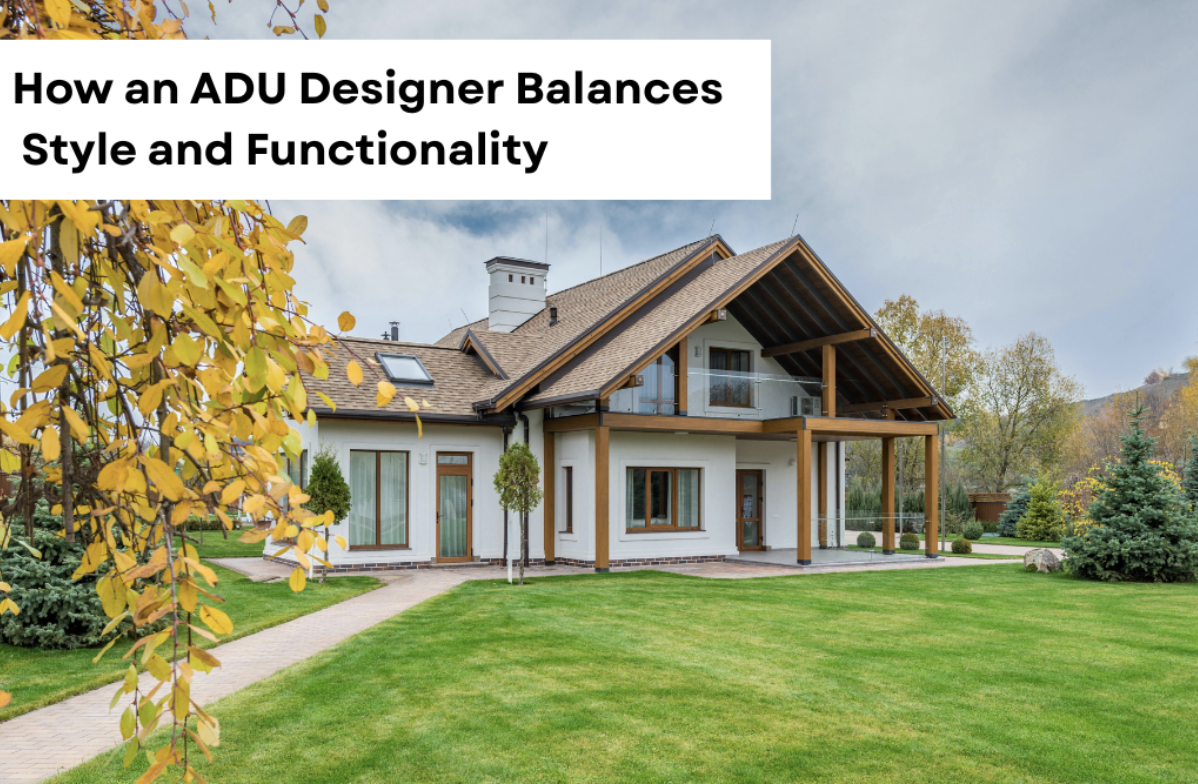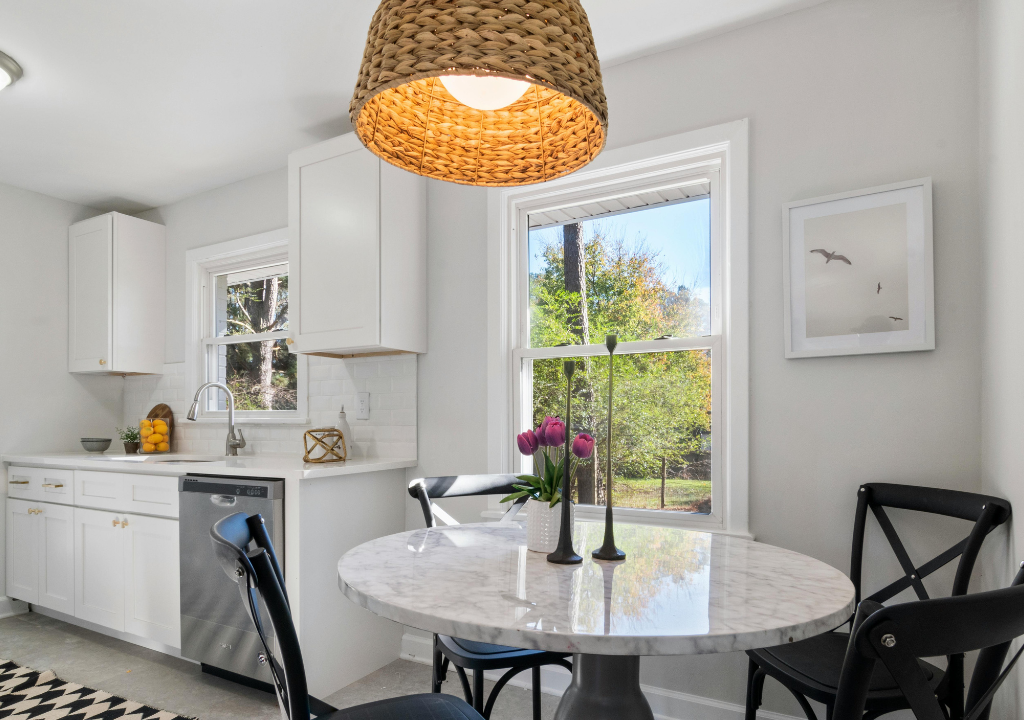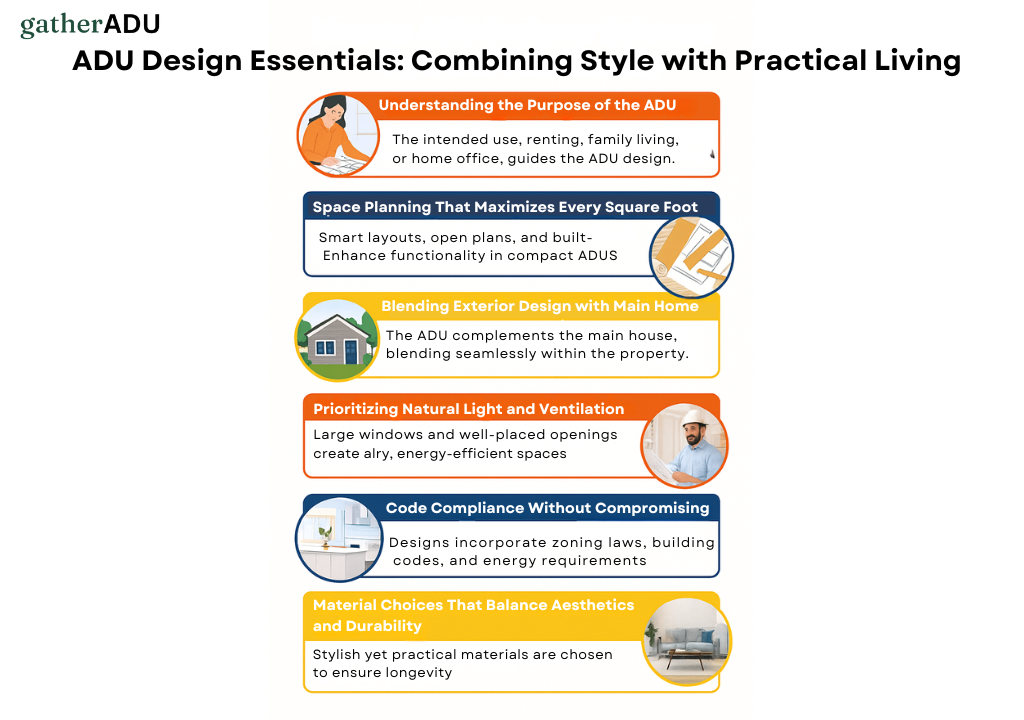ADU Knowledge
September 28, 2025
How an ADU Designer Balances Style and Functionality

.png)
Schedule a free appointment with one of our ADU experts.
Get ADU QuoteOr call: (323) 591-3717
Planning an Accessory Dwelling Unit (ADU) typically involves two primary objectives: creating a visually appealing space that also efficiently meets everyday needs. The challenge is finding the perfect harmony between style and function. In Los Angeles, where property values, zoning rules, and lifestyle demands are diverse, a skilled ADU designer can turn your backyard into a living space that’s practical, elegant, and tailored to your vision.
At GatherADU, we specialize in striking that balance seamlessly. Our expert designers know how to combine stunning aesthetics with innovative functionality while navigating Los Angeles building codes and budgets. From concept to completion, we make the process stress-free and straightforward. If you’re ready to transform your property into a stylish and functional ADU, trust us to deliver results that exceed your expectations.
Before drawing the first line, an ADU designer begins by asking: What is the primary use of this space? Whether the ADU will serve as a rental, a home office, or a private suite for family, the purpose informs every design choice.
By clarifying intent upfront, the designer ensures style aligns with function right from the start.

In Los Angeles, where ADUs are frequently constructed on compact or irregularly shaped lots, thoughtful and efficient space planning becomes essential to ensure comfort, usability, and long-term functionality.
Designers use techniques like:
For example, a detached ADU with 500 square feet can feel roomy with tall ceilings, well-placed windows, and multi-functional furniture. A skilled designer knows how to make small spaces feel expansive without compromising aesthetics.
An ADU shouldn’t look out of place in your backyard. A professional ADU designer carefully considers how the new structure will complement the primary residence and enhance overall curb appeal. This includes:
The ultimate goal is to increase property value while ensuring the ADU feels like a seamless extension of your home, not an afterthought.

Good design is about more than appearances; it’s about livability. Designers balance style and function by ensuring ADUs feel open, airy, and connected to the outdoors.
These design choices don’t just elevate aesthetics; they transform the ADU into a healthier, more comfortable place to live every day.
One of the biggest challenges in ADU design is striking a balance between creativity and regulations. California’s ADU laws and Los Angeles zoning codes govern everything from unit size to setbacks. An expert ADU designer can incorporate these rules into the project without sacrificing design intent.
For instance, energy requirements under Title 24 may influence the selection of windows, while setback limitations shape the building's footprint. At GatherADU, we ensure that every design strikes a balance between compliance and creativity, so your ADU is not only beautiful but also fully legal and ready for approval.
Every homeowner wants an ADU that looks great, but style must also be practical. That’s why material selection is a critical part of the design process.
The best ADU designers help homeowners strike the perfect balance between beauty, cost, and longevity.

Inside the ADU, style and function come together through carefully chosen details. Designers often suggest neutral color palettes that make interiors feel larger and more versatile, while space-saving solutions such as Murphy beds or convertible sofas add flexibility without clutter. Custom shelving and cabinetry offer innovative storage solutions, while energy-efficient appliances provide modern convenience and help keep utility costs low. Each design choice enhances appearance while ensuring the space remains highly livable.

Balancing style with functionality is never simple. Many homeowners struggle with mismatched finishes, wasted space, budget overruns, or costly redesigns. Navigating Los Angeles codes and zoning rules adds even more stress, leaving families unsure how to move forward. Without expert guidance, an ADU project can quickly become overwhelming and frustrating.
At GatherADU, we provide the perfect solution. Our experienced team specializes in ADUs that are both beautiful and practical, tailored to the needs of Los Angeles homeowners. From design concepts to full construction support, we streamline the process, ensure compliance, and deliver on time. Call (323) 591-3717 today to schedule your complimentary consultation.
Most ADUs in Los Angeles range in size from 400 to 1,200 square feet, depending on zoning regulations and lot size. Thoughtful design ensures spaces remain functional, comfortable, and code-compliant, whether you’re building a compact studio or a larger family unit.
Yes. Designers frequently blend architectural styles to complement the main home while reflecting the homeowner’s preferences. This balance creates ADUs that feel cohesive, timeless, and uniquely personalized, enhancing curb appeal without sacrificing functionality or long-term value.
Design services usually account for 8–15% of total project costs. While this may seem significant, professional design prevents construction errors, reduces plan revisions, and ensures efficient use of space, saving homeowners money and stress during the building process.
Yes. Many ADU designers, including full-service firms like GatherADU, manage permits, feasibility studies, and code compliance. This streamlined approach ensures your project avoids costly delays, passes city reviews smoothly, and stays fully compliant with Los Angeles zoning regulations.
In Los Angeles, ADU projects typically take 6–9 months from design through construction. This includes architectural planning, city permitting, and building. Professional guidance helps minimize delays, keeping the project on budget and aligned with the homeowner’s long-term goals.
.png)
Not sure where to start with your ADU project?